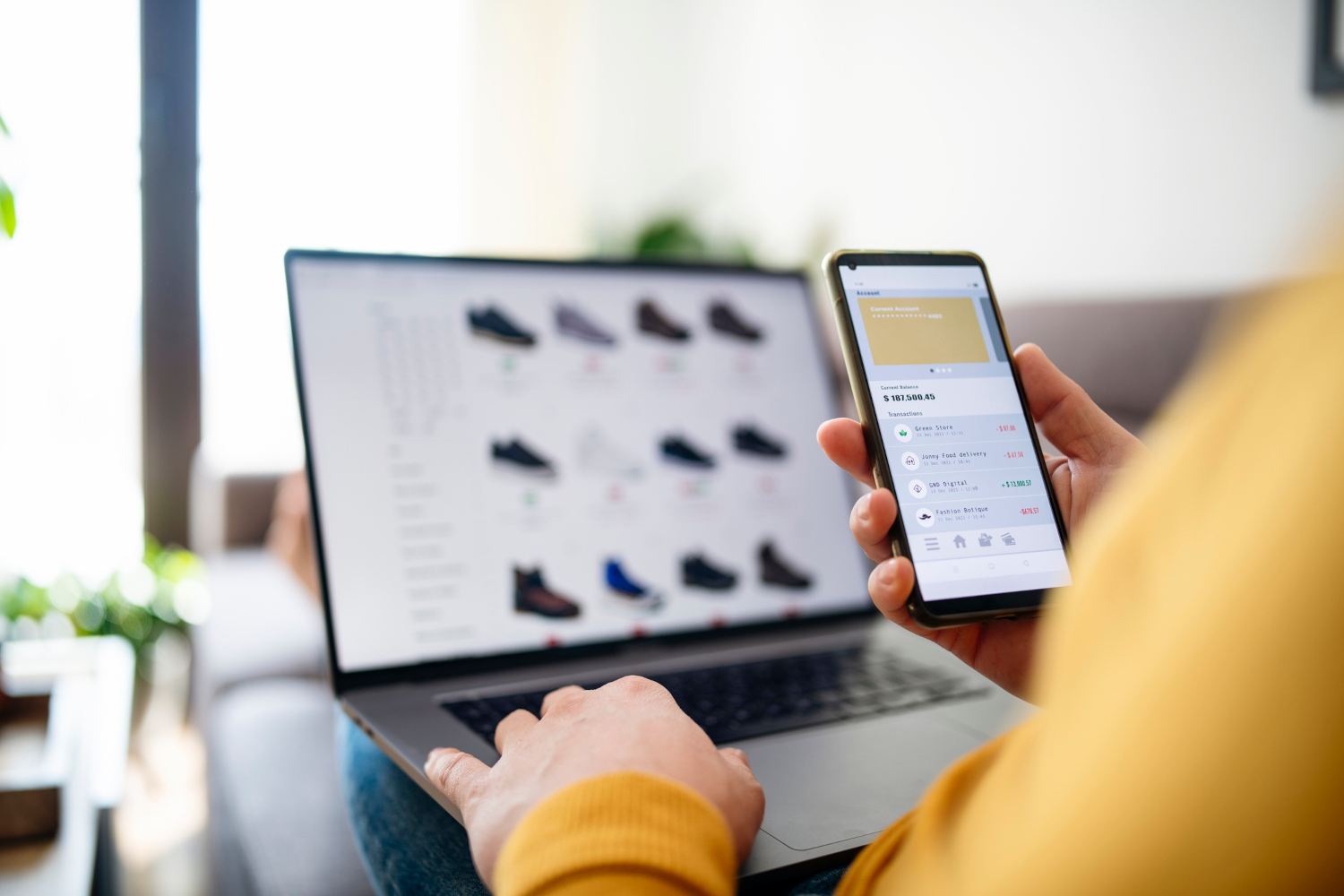In eCommerce, where ad costs climb and acquisition channels fluctuate, email remains the workhorse of profitable growth even today. For mid-market eCommerce brands with mid-size average order values, email isn’t just a retention channel—it’s an under-leveraged conversion engine hiding in plain sight.
At Monetizy.ai, we believe mid-sized brands face a unique challenge: you’ve grown past the early DTC hustle but aren’t ready to carry the overhead of enterprise marketing teams or expensive AI integrations. That’s where intelligent automation, especially AI applied to email strategy, becomes a critical inflection point. With the right systems, you can increase conversions, lift margins, and scale sustainably—without ballooning headcount or spending more on acquisition.
This post unpacks five data-backed AI email strategies specifically designed to convert more traffic into paying customers. Each tactic is built to stretch your margins, unlock LTV, and reduce operational drag. The best part? These aren’t theoretical ideas. They’re proven, pragmatic, and aligned with Monetizy’s mission: turning hidden revenue into predictable revenue.
Why Email Strategy Matters More for Mid-Market Brands
Brands with mid-size AOVs operate in a strategic sweet spot. You’re not reliant on impulse buys or micro-margins. Your products are considered purchases that customers think about—and that means emails that meet intent can directly affect the bottom line.
But here’s the trap: many brands still treat email like a generic broadcast channel. In reality, email should function as a reactive, personalized, high-conversion surface. When AI is applied to this channel, your emails become less about guessing and more about predicting—not just who to message, but when, why, and how.
Let’s explore five strategies you can start implementing today.
1. AI-Timed Send Optimization
One of the most basic yet powerful applications of AI is knowing exactly when to email each customer. Rather than batch-and-blast at 10 AM on Tuesday, AI models use behavioral patterns to optimize send times per user. For example, if Jane doesn’t open the first two promotional emails on back-to-back Saturday mornings, your platform will try a weekday—automatically.
This isn’t new, but it’s often underused. Optimized send times can increase open rates by up to 23% and click rates by 20%. For brands with geographically distributed customers or varied lifestyles, that lift can translate to thousands in recovered revenue monthly.
But timing is even more effective when combined with trigger logic—for example, when a price drop occurs, the system waits until the recipient’s optimal window to send. It’s conversion logic at the intersection of context and intent.
| Strategy | Primary Impact | Monetizy.ai Application |
| AI Send Optimization | Open/Click Rates | Triggered delivery based on personal behavior |
| Smart Timing + Trigger | Intent Conversion | Delivers promos at peak engagement times |
With AI, this logic can be built into your campaign engine. No guesswork. No manual segmentation. Just higher performance with lower friction.
2. Predictive Abandonment Emails (Before They Bounce)
Cart abandonment emails are already a staple in eCommerce, but they usually arrive too late. A user leaves, the brand waits a few hours, and then a nudge is sent. By that time, the intent window has already started closing.
With predictive abandonment, AI models analyze real-time signals—scroll depth, mouse movement, hover duration, dwell time—to estimate abandonment before it happens. This lets your system trigger a personalized message while interest is still active.
It turns the conversation from “you forgot something” into “we noticed you’re interested.”
Exit-intent emails already convert 10–12% on average. Predictive abandonment lifts that ceiling even higher, especially when paired with dynamic content (e.g., “Still browsing that olive hoodie? Here’s 10% off if you check out now.”).
For mid-AOV brands, that preemptive nudge often closes the gap between consideration and checkout.
3. Dynamic Offer Sequencing Based on Propensity to Convert
Not every shopper needs a discount. In fact, McKinsey data suggests that 40–60% of purchases would occur even without an incentive. The problem? Most brands offer a discount to everyone, cutting into margins for no reason.
AI models can score user purchase propensity in real-time, adjusting the offer sequence based on how likely they are to buy. Someone who historically converts at full price won’t get a discount until the last step—if at all. Someone more price-sensitive may receive a value-add or urgency offer sooner.
This approach is proven to lift profit margins 20–30% by reducing unnecessary incentives. It also keeps your brand equity intact.
| Segment | Initial Offer Tactic | Final Incentive Path |
| High Propensity Buyer | No Offer / Scarcity CTA | Last-minute urgency email |
| Mid Propensity Buyer | Value-Add (free ship) | Small % discount + timer |
| Low Propensity Buyer | Early discount + bundle | Full offer w/ urgency |
Most brands can implement this by feeding purchase data into a predictive engine and testing offer sequences via email automation. With Monetizy.ai, this is baked into the campaign logic—letting you sequence smarter, not louder.
4. Personalized Product Bundling via Email
Bundling works. The trick is making it feel curated, not templated. AI solves this by combining behavior, product affinity, and purchase history to recommend bundles that fit the shopper’s taste.
Instead of pushing whatever’s in stock, AI can identify high-performing product combinations based on what similar users buy together. For instance, if 27% of customers who buy a rosewater toner also add a bamboo serum within a week, bundle them preemptively.
When sent via email—especially after browse abandonment or during winback flows—these bundles outperform generic cross-sells. Shopify Plus data shows personalized bundles can increase AOV by 15–30%.
Even better, bundling reduces single-item returns and creates a more complete brand experience. With Monetizy.ai, these recommendations can be tested and refined over time, becoming a long-term profit lever.
5. Intent-Triggered Winback Emails with Product Affinity Logic
Winback emails usually go out 30, 60, or 90 days after a customer disappears. But what if your best customers just needed a more relevant reason to come back?
AI lets you shift from time-based re-engagement to intent-based. It identifies high-LTV users at risk of churn and pinpoints which products they were last interested in—then triggers a personalized email built around that affinity.
Rather than a generic “we miss you,” the email reads, “Still loving the charcoal kit? Here’s a new way to use it.”
The difference? AI-modeled winbacks convert 2–3x better than batch campaigns because they speak to interest, not just absence. They’re also especially effective in verticals where purchase frequency varies—wellness, supplements, apparel.
Intent-driven winbacks are a plug-and-play playbook. Past browsing, order patterns, and churn risk scores may be used to decide when and what to send—maximizing reactivation without overcommunication.
Smarter Email Is the New Growth Engine
AI isn’t the future of email—it’s the new standard. And for mid-sized eCommerce brands, that shift is happening at the perfect moment. With customer acquisition costs rising and operational leverage becoming a boardroom topic, the smartest brands are using email to do more with less.
These five strategies—send-time optimization, predictive abandonment, propensity-based offers, AI-driven bundling, and intent-led winbacks—aren’t just tactics. They’re systems for scalable, margin-rich growth.
With Monetizy.ai, we help brands implement autonomous revenue engine technology without requiring massive team bandwidth. Our platform combines behavioral data, predictive intelligence, and conversion logic into a single operating layer that makes your emails work harder—without working harder yourself.
Ready to unlock effortless, 24/7 revenue growth? Join the Monetizy.ai waitlist today



